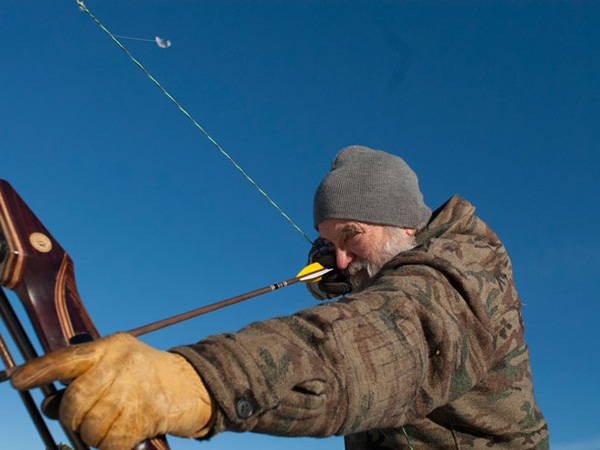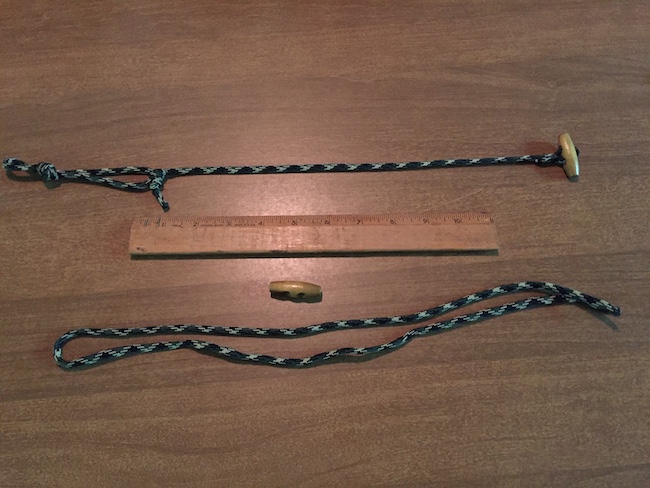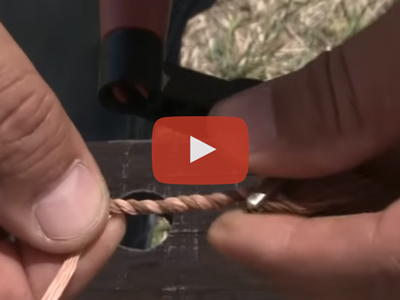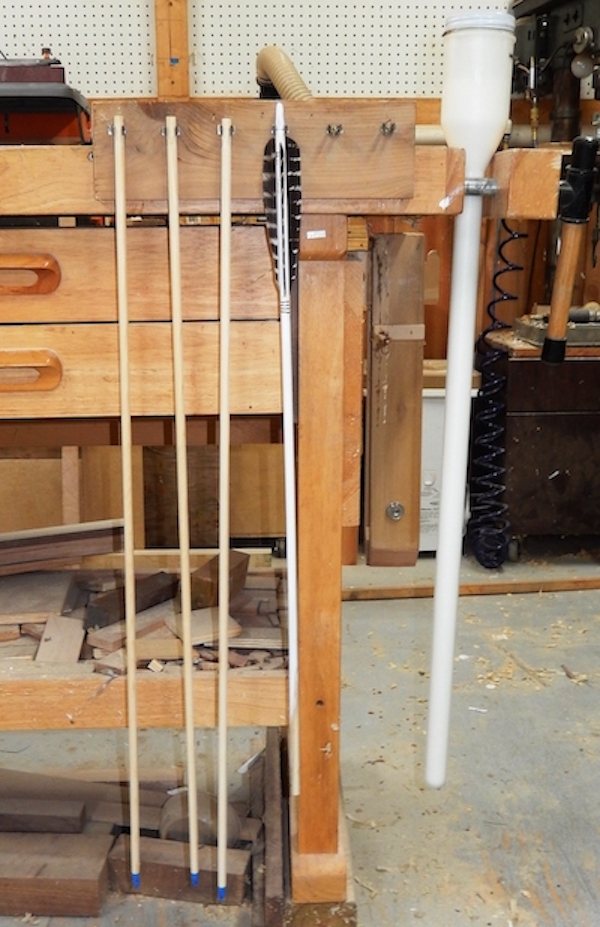When a hunter goes into the woods, he is at a disadvantage. The game he pursues has better eyesight, an ability to hear at greater distances, and a far more acute nose. Game animals also have a natural instinct to sense danger. One way a hunter tries to tilt the odds in his favor is by using camouflage clothing. Open up any catalog and you can find many different patterns of camo. All look good to the consumer, and most are effective.
Although camo clothing is a great option, especially for the ground hunter, we can’t let clothing be the only thing that helps us stay hidden from our quarry. Along with the camo, we need to practice the art of concealment. At first glance, the two words “camouflage” and “concealment” may seem to have the same meaning, but there is a difference. Camouflage is a disguise, while concealment means being hidden out of sight. Camo clothing is basically a costume. When you wear camo, you are dressing up to look like something in the woods—a bunch of leaves, tree bark, snow, marsh grass, or even the void in between trees. Even though you are camouflaged, you might not be concealed.
On Halloween, people come to your door dressed in their costumes. You don’t know who they are, but you still see them. Think of camo the same way. You may have your leaf costume on, but if you are not concealed, that big buck or turkey still might see you. The animal won’t know what you are, but natural instinct will kick in and they will know that you don’t belong there. Concealment means hiding, being out of sight. The way to fool an animal’s eyes is the effective use of camouflage and concealment.
Many factors affect concealment, including wind direction, shooting lanes, and lines of sight. Finding a location that provides ample concealment and still offers plenty of space to see and shoot is a challenge. Looking for a good spot is all part of the scouting process. You can’t stand in the middle of an open field with a perfect view and expect to be concealed, the same way you can’t hide in a refrigerator box and wonder why you can’t see anything. Realize that you may have to sacrifice a perfect location to spot game for a more concealed location.
The biggest rule of concealment is hiding your outline. The sides of your arms, your shoulders, and your head make up your outline. It is very distinct in the woods and game animals easily notice it. The quickest way to fix the problem is to find a tree that is wider than your shoulders. This is where a sacrifice might be needed. If you want to hunt a new rub line that you found but there is nothing around it but saplings, there won’t be much concealment. A new location a little farther down the trail in some bigger woods might be the answer.
-
The hunter may be wearing camoflauge; however, his shape stands out
against the open background making his shape visible to game.
-
The hunter has used not only camoflauge, but also concealment
by placing a tree behind him.
Hunting on high ground will provide a good vantage point, but be aware of the skyline behind you. Being on the very top of a ridge can silhouette your outline against the sky. One way of hiding your outline is using a defiladed area, even if it is only a few inches deep. People and animals are used to seeing things at a certain level. If a person is standing and peeking around the corner at you, he is easy to spot. If the person kneels down, and then peeks around the corner, it will take you a few more seconds to realize that he is there, because you are not used to seeing a face that low to the ground. Getting a quarter of your body hidden by the ground will give you an advantage, making dry creek beds and uprooted trees good places to investigate for a possible setup.
One option that is often overlooked is lying flat on your stomach. The circumstances need to be right; weather, and your line of sight have to cooperate, but your outline will disappear. If you choose to hunt from the prone position, be sure to practice shooting from that position, or be able to get to a knee without too much trouble.
Sunlight plays a role in concealment. As the sun rises or sets, shadows are cast in the woods. Don’t get caught in direct sunlight. Use shadows to your advantage, and keep track of where the shadows fall when you do your scouting or while you are hunting.
Concealment of your hands, face, and head are very important. Most hunters wear some sort of hat in the woods. If possible, wear a boonie style hat or a bucket hat. This kind of headgear will break up the outline of your head better than a knit hat. Some boonie hats have a band to hold grass or leaves. This is a good idea, but keep it on the small side and be sure that it’s not too heavy.
You have two good options when it comes to concealing your face: camo paint or a face net. The easiest and neatest is the head net, but some can be uncomfortable and impair your vision. A bandana tied around your face is also a practical and simple option. Face paint won’t move or interfere with vision or shooting, and when applied correctly will offer the best concealment.
Face paint usually comes in four or five colors. The general rule is to apply light to dark, and dark to light. What that means is that the light places on your face—the tip of the nose, the cheekbones, and the chin—should get a dark color. Black, dark green, and brown will work best on those spots. The dark area on the face—the eye sockets, the side of the nose, and under the cheeks—should get lighter colors. Grey, tan, and light green are the best options here. Remember, you are not just painting your face; you are making the distinguishing features disappear.
Taking time to construct a natural blind is a great idea. It doesn’t have to be anything too fancy. Sometimes just dragging a few branches with leaves on them into the right position is all it takes to conceal you. Try to set up your blinds while you are scouting. You don’t want to be moving material in the dark or during the hunt.
Being camouflaged is good, but being camouflaged and concealed is better. Seeing a big buck is good, but seeing one in range is better. Practice the art of concealment, use it when you can, and turn yourself from a good hunter into a better one.








Leave A Comment